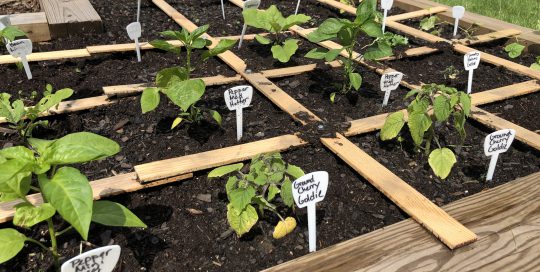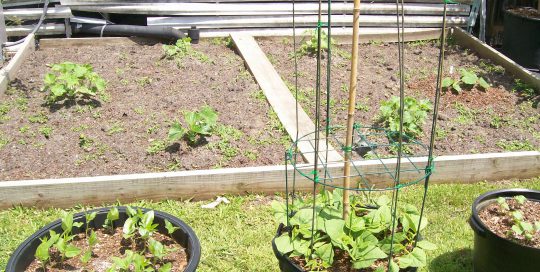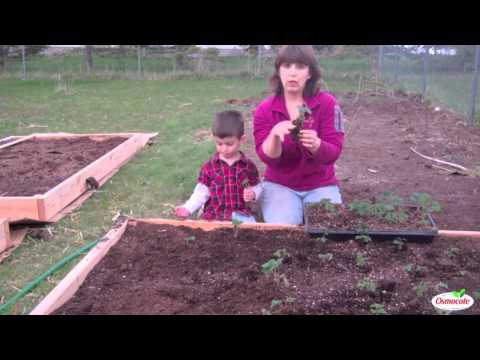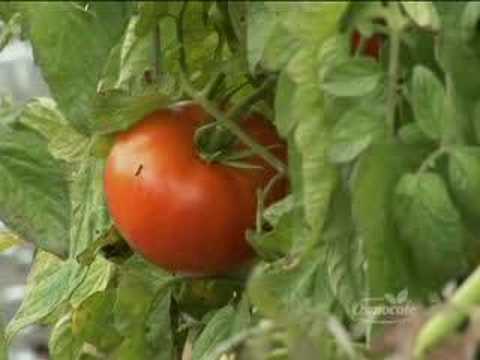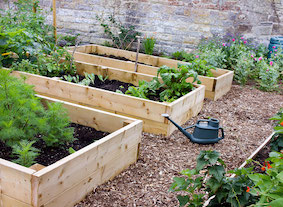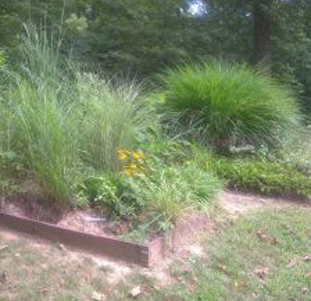What to grow in a raised garden bed
From corn to pumpkins, there’s no limit to what you can grow in a raised bed. Even potatoes are possible, if you build a bed at least a foot deep. You’ll need to bury the spuds 6-inches deep in a trench and have enough room (and additional soil) to hill them.
Plant your vegetables in the same spacing as in a traditional in-ground garden, particularly if you have a shallow raised bed. If it’s deeper, there are more nutrients available to the plant, yet proper spacing also inhibits disease issues from overcrowding.
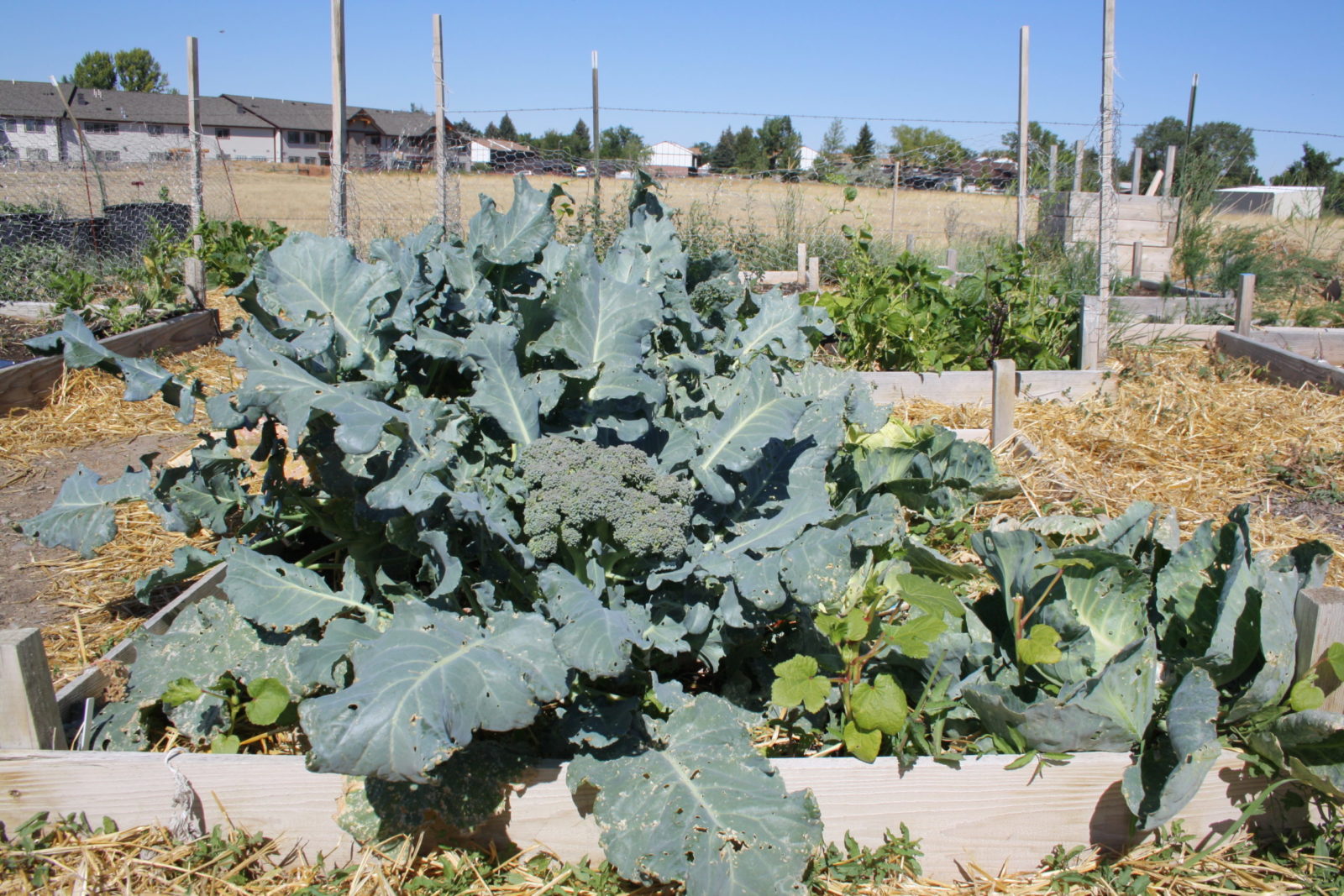
Raised garden bed – photo by Amy Grisak
For instance, determinate tomatoes should be roughly 18-24 inches apart, bush beans are 2-4 inches apart, give cabbage 9-12 inches, and so on. The biggest difference is you are not accounting for space between rows, since there is no reason to walk or run a rototiller, which ultimately makes a better use of space. Overall, raised beds are far more efficient.
Watering raised garden beds
In order to reduce soaking the lumber, as well as to make the most efficient use of supplemental watering, consider using soaker or drip hoses in the beds.
Soaker hoses are easy to set as they seep from the entire length of the hose. The ground is saturated in, around, and between the plants. This works well for vegetables such as carrots, beans, beets, and other crops growing close together. When plants are farther apart, some water is wasted, but it still is a better use than overhead watering.
Drip hoses with specific emitters attending to each plant can be very efficient. Water is sent directly to individual plants. Peppers, tomatoes, squash, cabbage, cauliflower, and eggplant all benefit from a more focused water source. I recommend emitters every 6-inches along the tubing. This works especially well when there are larger plants.
Weed and pest pressure
Because you’re starting with weed free soil any grass below the bed is covered deep enough to prevent it from growing through your bed. Raised beds are a lifesaver when it comes to reducing weeding time. With no perennial weeds from the git-go, and as long as you are diligent in preventing weeds, raised garden beds are easiest for upkeep.
Raised beds are helpful in minimizing the impact of pests as well since they often provide better ventilation between the plants. With a raised bed, it’s easy to keep a close eye on the soil and the plants to nip any infestation before it can do any real harm.
What to do with a raised garden bed in the fall
Clean-up is simple when the season is over. Remove dead plants in a vegetable or annual flower garden just as you would in any conventional garden. Perennials can be cut back or allowed to remain standing throughout the winter. They will provide a bit of interest to the landscape as well as seeds for the birds.
Fall is the best time to work amendments into the soil. Add compost, along with sulphur or lime (depending on your soil alkalinity level). It may be a good idea to add other mineral supplements. After spending a winter in a fallow garden, nutrients are easily used by the plants in the spring. Work you put into the garden in the fall pays off in the spring.
Although they require a bit of effort to build, gardening in raised beds brings a new level of convenience and efficiency to your garden. Build to your personal specifications and enjoy gardening on an entirely new level.

